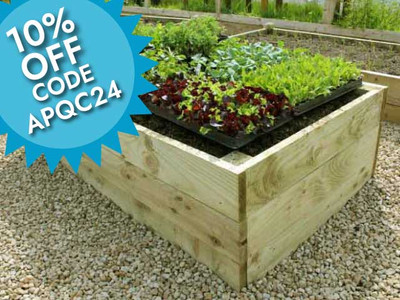The Benefits of Raised Bed Gardening
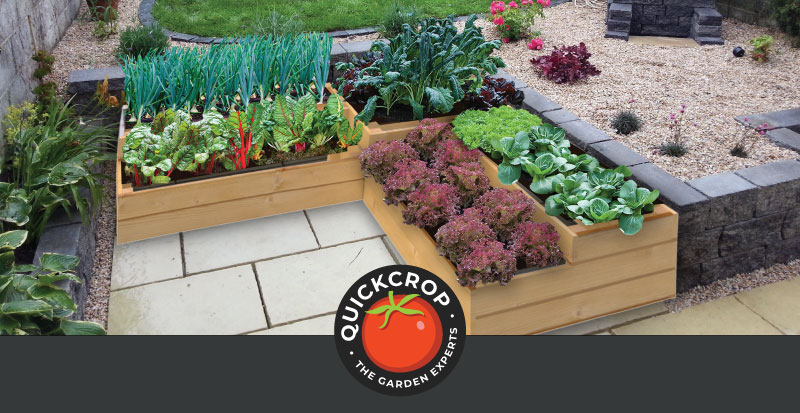
Why I Grow in Raised Vegetable Beds
I guess the best place to get started is why should I grow in
Raised Vegetable Beds in the first place? For me, growing in raised beds was my only option at first. When I began growing in earnest, the site I had to work with was marginal land with poor soil and even worse drainage.
In a way I am glad my garden had these issues, as it forced me into raised bed gardening from the start which in turn governed the way I grow. It is years now since I started my garden; the soil and drainage problems are long forgotten yet I still enjoy my orderly and easy to maintain beds.

The use of raised beds has had a big impact on my growing because they made me think of the makeup of my soil before the first crop had even been sown. In my case I brought in soil, so I was able to tailor my mixes to the needs of different crops. A third of my beds have a sandy mix which I use for root crops, while I have heavier loams for crops like cabbage and Brussels sprouts that like a firmer footing.
I see my raised beds as the final stage of the composting cycle, where soil organisms break down any manure, seaweed or compost I add and eventually transform it into humus rich soil.

120cm Square Allotment Raised Bed Flatpack Kit - 17.5cm high
View Product
The Advantages of Raised Bed Gardening
There are a number of good reasons which I'll illustrate below, but in general it's all about creating a deep nutrient rich soil which, crucially, doesn't get walked on or compacted. The good open soil structure present in raised beds makes root growth easier for plants, as well as containing air pockets for beneficial microbial life and other friendly organisms.
Soil is the key to successful raised bed growing systems (or any gardening), and keeping your planting in dedicated protected spaces allows you to pamper this essential resource.
Here's why I think raised beds make sense:
They look great
Maybe it is because I am a designer at heart but I love the ordered look of a raised bed garden with everything neat, tidy and easy to manage. The timber is a beautiful contrast against the foliage of the plants and gives an instant structure to the garden.

They are much easier to look after
There is a bit more work required setting up raised beds but this will be repaid many times over in the time saved looking after your garden. You will have less weeding to do as you don't have encroaching weeds from the surrounding soil. The weeding you do have to do is easier thanks to the more comfortable working height and, due to the nice loose soil, is relatively quick.
The soil remains loose and easy to work
Loose, free draining soil is the most productive as there are plenty of air spaces for your soil life to breathe. The organisms in your soil are the guys who ultimately turn your manure or compost into plant food, so keeping them happy should be your number one priority.

Premier Split Level Raised Vegetable Bed
View Product
Protect your soil from traffic
You never walk on the soil in your raised bed which means it doesn't get compacted by your boots. As well as giving your microbe friends a nice home it also means plant roots have an easy time penetrating the soil and it makes it much easier for you to weed.
Choose your soil
Many gardens have shallow soil of poor quality which won't be sufficient to feed demanding vegetable plants. A raised bed can be filled with imported soil to your specification. A greater depth of quality soil means a larger root and a healthier plant.

Premier 22.5cm FSC Timber Raised Garden Beds
View Product
They give you a longer growing season
The soil in a raised bed will warm quicker in the Spring which means you will be able to start growing a little earlier. Well drained raised beds allow you to leave crops in the ground for longer without fear of them rotting. This is especially important for growing garlic or overwintering onions, which are planted in the Autumn and need very good drainage over Winter. Mini tunnel kits can be used with a polythene cover to make a mini-growhouse for early Spring growing, or cultivating warm climate crops in exposed gardens.
Pest control is easier
A tidy garden has less pests, particularly when we are talking about slugs. Sharp gravel paths around your raised beds are good for keeping slug populations down as they don't like crossing them. Raised beds are also easy to attach crop protection structures to, like our fabulous mini tunnel system. Mini tunnels can be fixed to the sides of raised beds using hinges giving easy access and a secure fit that won't blow around in strong winds..
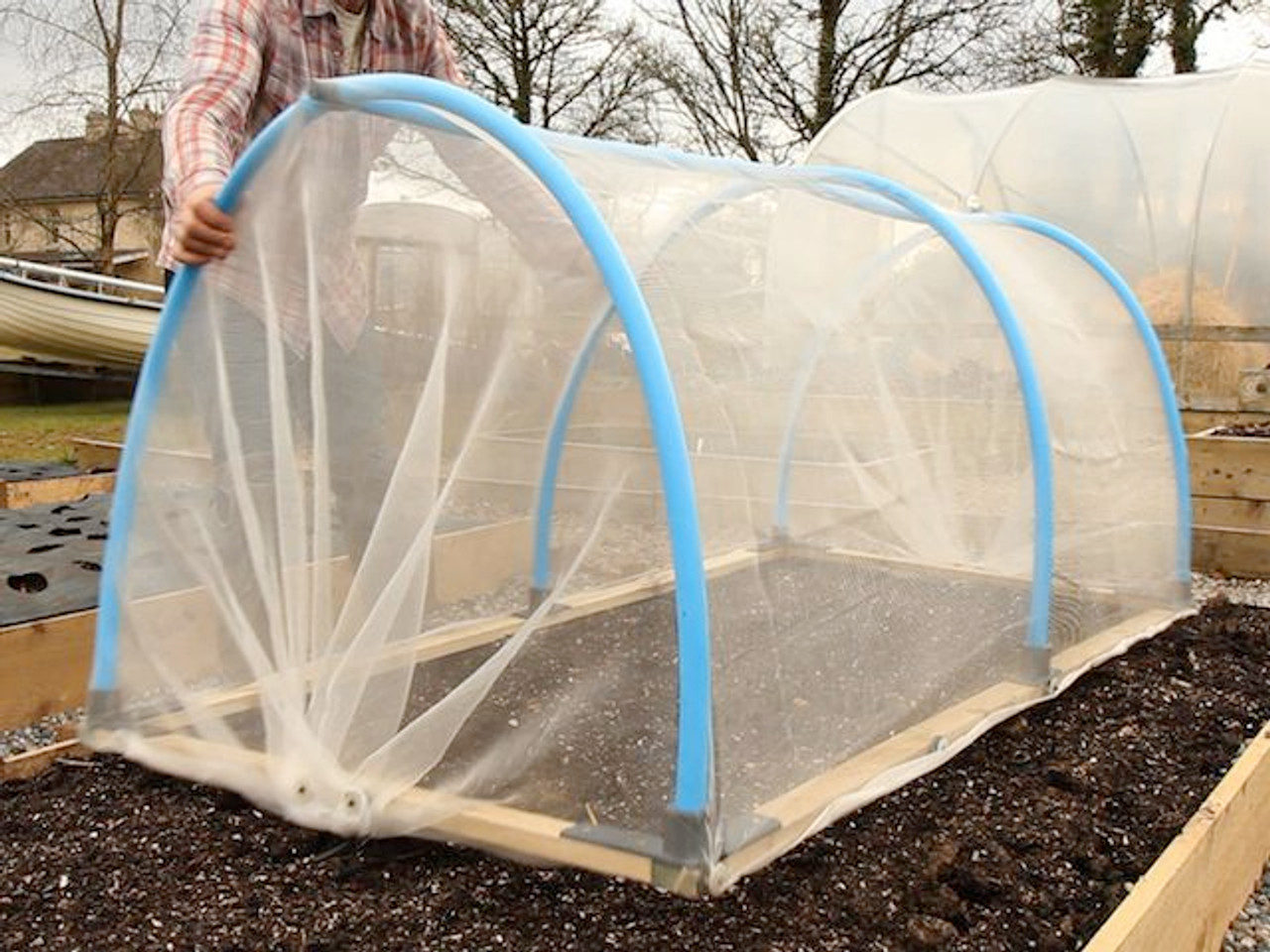
Mini Polytunnel complete frame kit- wood, kit and tubes.
View Product
Raised Beds aid growth
The rich deep soil means you will get more vigorous growth from your vegetable plants and in many cases can plant at closer spacings making a small area more productive. Raised beds are particularly useful in an urban vegetable garden where space is at a premium.
Grow successful carrots and other root crops
Carrots are very difficult to grow in a heavy clay soil and will be stunted or forked in appearance. Raised beds allow you to create the soil you want depending on what you are growing. You can mix in extra compost, sand or manure when filling your beds to create the perfect growing medium.
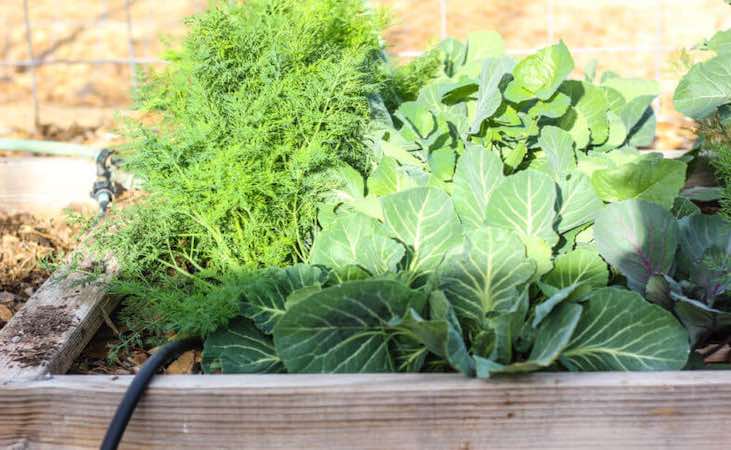
Quickcrop Raised Beds
We have a range of beds here at Quickcrop, from our popular
Premier beds to our 'Deluxe' top of the range vegetable beds with rounded corner posts and galvanised brackets. We also have timber 'Easy Assemble' beds which don't require any tools or fixings - they simply slot together. Once you have your bed set up, we have a broad range of raised garden bed supplies including topsoil, compost, vegetable seedling plants and all the consumables you'll need to grow a fantastic crop.
The pressure treated timber will last a minimum of 10 years of harsh outdoor conditions. The preservative used has been certified by the soil association as safe for use with organic food crops, so you can be sure no harmful materials enter the soil.

Timber Raised Bed Gardening Kit - Deluxe 35cm High
View ProductOur raised vegetable beds come in a range of heights from 7 inches through to 9, 14 and 21 inches tall. The beds also come in a range of sizes including 3 x 3ft, 4 x 4ft, 6 x3 ft, 6 x 4ft and a whopping 6 x 6ft bed. We also supply custom lengths of timber should you require a size we don't stock.
If your beds are to be longer than 8ft, we recommend using a cross brace in the middle of the bed to prevent the weight of soil inside from forcing the bed to bow. A cross brace is simply another end panel screwed into the centre of the planter, separating it in two.
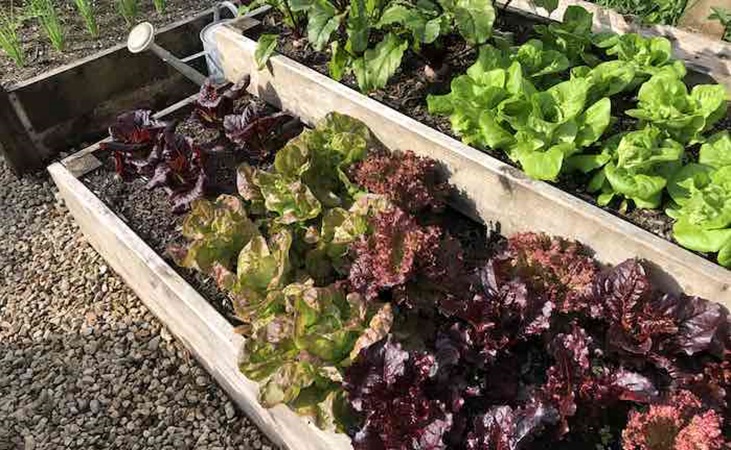
What height raised bed do I need?
You have a couple of questions to answer before you decide which height raised bed is best for you. Considerations would include the cost of the raised beds, the condition of the soil under the bed, the depth of soil needed for what you want to grow and creating a comfortable height.
If your raised bed is being placed on a hard surface (like a concrete patio area), you will need a deep bed to give you sufficient depth of soil for your vegetables to grow. Also be aware that a shallow bed on a hard surface will dry out very quickly, as there is no moisture being drawn up from the soil below.

Economy Veggiebed 24h x 120cm x 120cm
View ProductIf your bed is being placed on soil you need to decide if the soil quality in your garden is good or bad. As a rule of thumb, any soil with a high percentage of organic matter will be good for growing vegetables. The darker the colour of the soil the more organic matter it contains, so you should get a pretty good idea by digging a test hole. If your soil quality is poor, you will need a bed of at least 14 inches high to grow most vegetable crops successfully.
What vegetables do I want to grow in my raised garden beds?
Some vegetables need deeper soil than others, so it's worth looking at what you want to grow before deciding which bed to choose. For example lettuce plants will thrive on a well fed shallow soil, whereas deep root vegetable like carrots, parsnips or potatoes clearly won't. Take a look at the info below to give you an idea of how deep the roots of these common vegetables grow.

Shallow Root 12 to 18 inches - Broccoli, Brussels Sprouts, Cabbage, Cauliflower, Celery, Chinese Cabbage, Endive, Garlic, Kohl Rabi, Leeks, Lettuce, Onions, Potato, Radish, Spinach.
Medium Root 18 to 24 inches - Broad Beans, French Beans, Runner Beans, Beetroot, Carrots, Chard, Cucumber, Aubergine, Kale, Peas, Peppers, Summer Squash, Turnips, Melon.
Deep Root 24 to 36+ inches - Artichoke (Jerusalem), Asparagus, Parsnips, Pumpkin, Rhubarb, Winter Squash, Sweet Potato, Tomatoes.
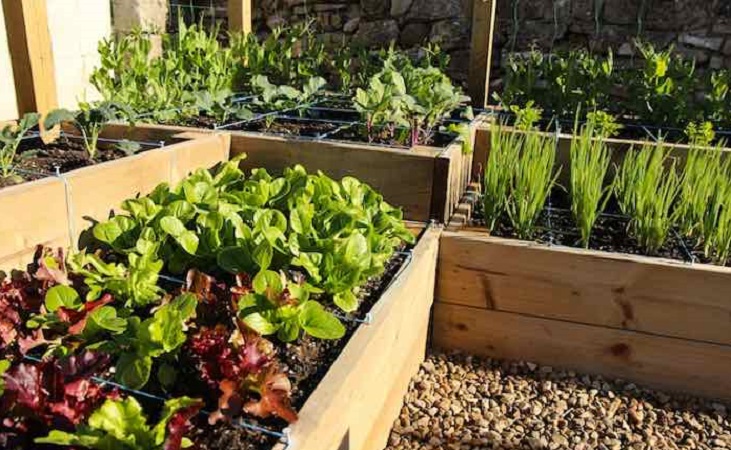
Square foot planting plans for raised beds.
The Square Foot gardening system was built around raised beds and is an ideal solution for beginners or gardeners with a relatively small growing area. The idea behind the system is the bed is split into a grid of square foot (30cm) sections with a fixed number of each crop occupying each section. Square foot gardening is an ideal fit for our raised planters as we stick to standard sizes of 4ft x 4ft, 6ft x 3ft, 6ft x 4ft and 6ft x 6ft, all of which a divisible into a square foot grid.
The reason square foot growing in raised beds is so handy for beginners is it quickly shows the planting distances for each crop. One of the biggest problems novice vegetable growers have are the planting distances of the various crops.
In the traditional system we have a distance between plants and a distance between rows which can make it difficult to plan a garden, especially in a small space. The fact that square foot gardening revolves around a fixed measurement of one square foot makes the system very easy to use, all you need to know is how many plants fit in that square.
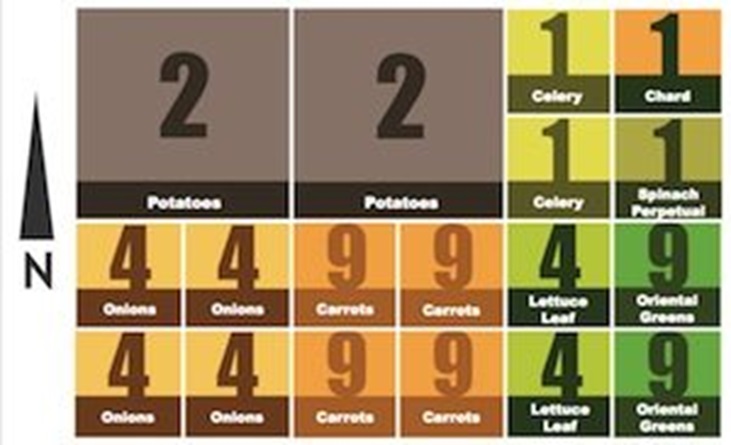
A typical Square Foot Garden uses timber raised beds 7-14 inches high (depending on the surface under the bed) and 6ft x 4ft in size. The 6x4 bed is then subdivided using string or timber laths to form a grid of 24 squares.
Each square is filled with with the plants of your choice according to the recommended numbers for each square foot. Some plants need more than a square foot of space (like the potatoes in the sample above) and will take up multiple squares. You can see the large potato square takes up 4 square feet with 2 plants growing in each space. We provide a planting key with each plan to show the planting layout for each crop, it may look a little confusing now but it is very simple once you get going.

Square Foot Vegetable Gardening Using Timber Raised Beds
View Related ArticleWe have a number of sample square foot garden plans on our site which have been designed to fit our raised beds. You can view our square foot garden plans by clicking the link.
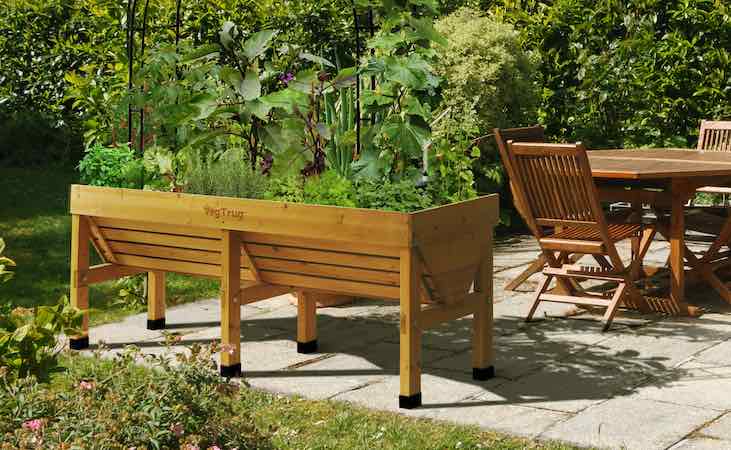
What is a comfortable working height for me? Many of us have difficulty bending which is where growing in a raised garden bed really makes sense. You can build a bed to any height you wish but for most people even a modest 14 inch high bed will make maintaining their garden much more comfortable.
Be aware that the higher the bed, the more soil will be needed to fill it. A 21 inch high 6ft by 4ft bed will take just under a cubic metre (1 tonne) of soil to fill so make sure this is taken into account when making your decision.
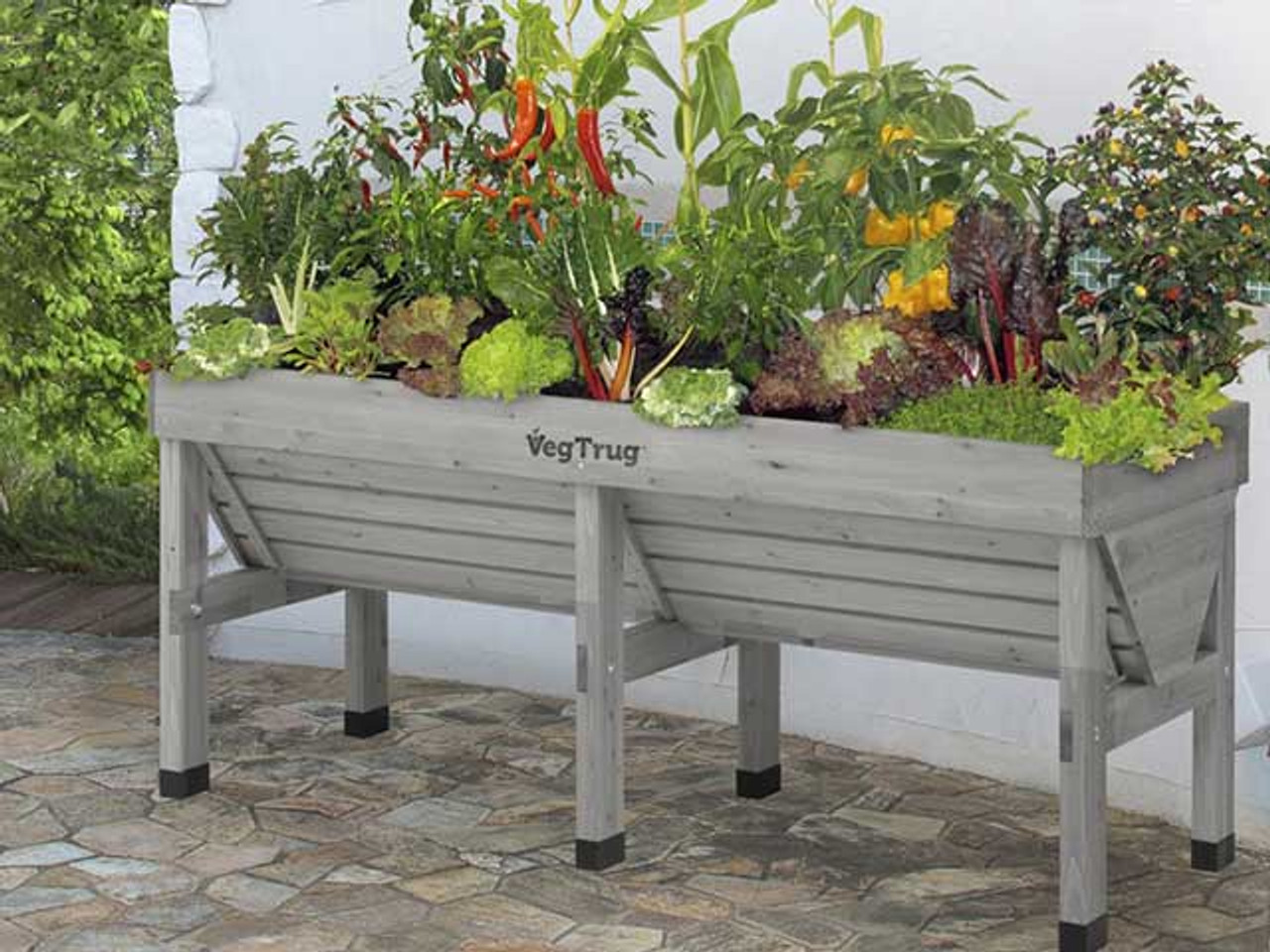
1.8m Vegtrug Vegetable Trough Planter
View ProductIf a higher bed is required there are also easy access options like the Vegtrug range of beds.
These beds or planters will often tend to have a more shallow soil than those placed directly on to the ground, so they are more suitable for shallow root crops like herbs and salad or leafy crops like spinach or chard. Easy access beds are perfect for wheelchair users or gardeners with restricted mobility.
The Vegtrug (pictured above) is a global success with growers located all over the world. It is an easy to assemble kit that produces a very strong and good-looking fruit and vegetable planter. We supply a range of Vegtrug kits, including tailor made fleece, mesh and polythene covers for protecting against pests or harsh weather.

